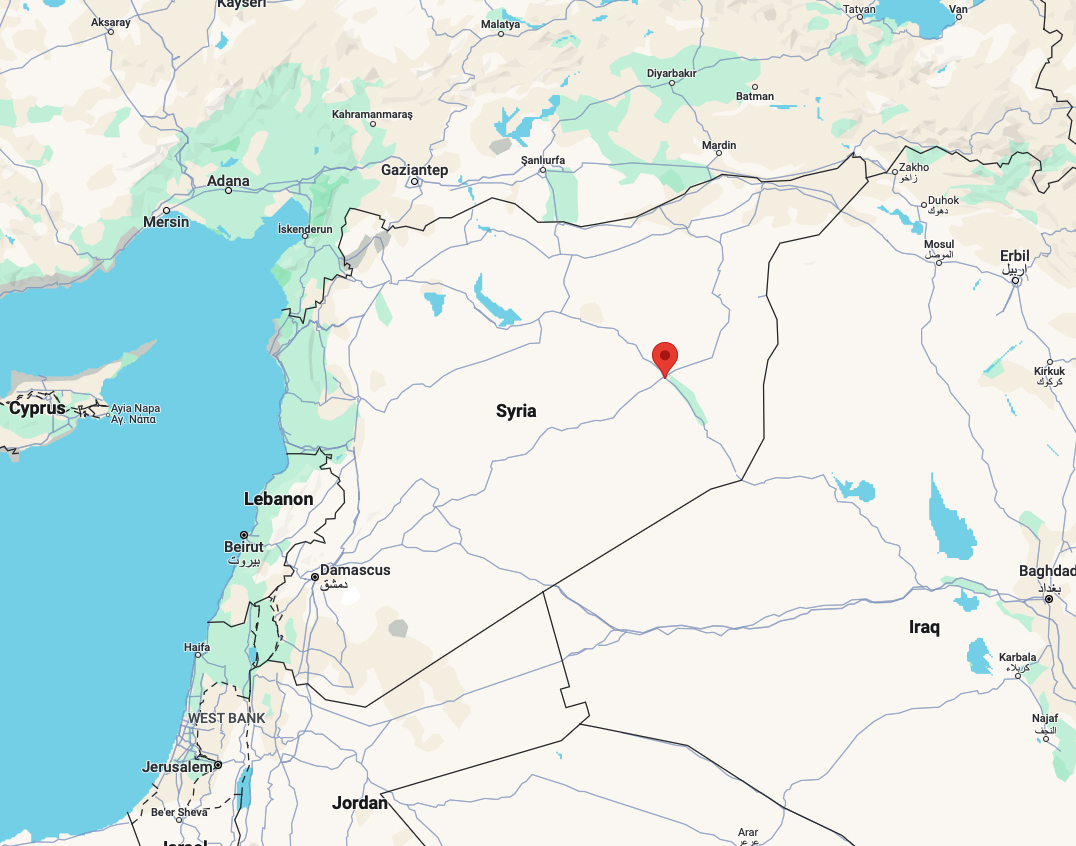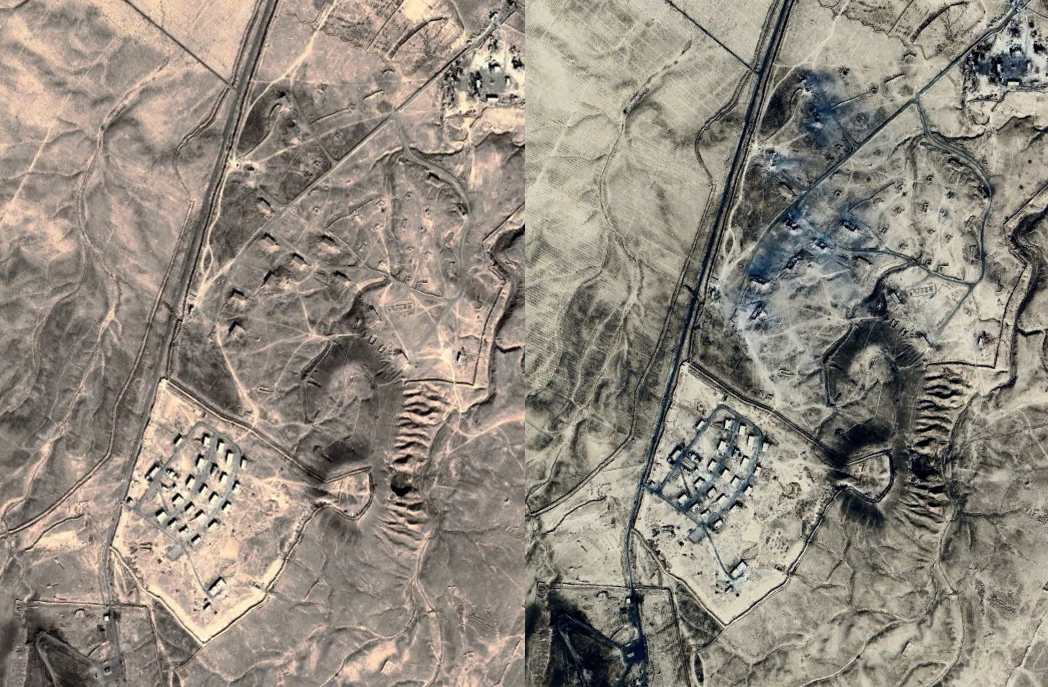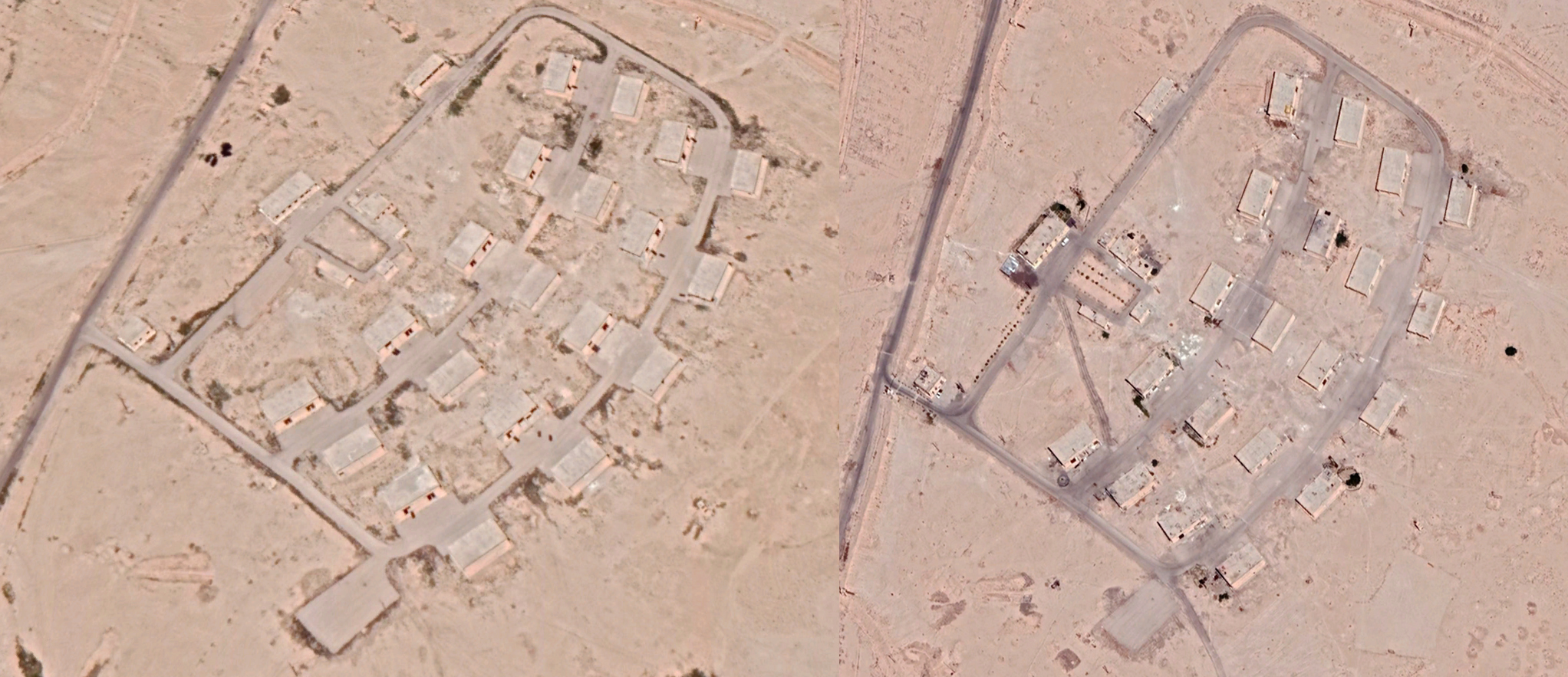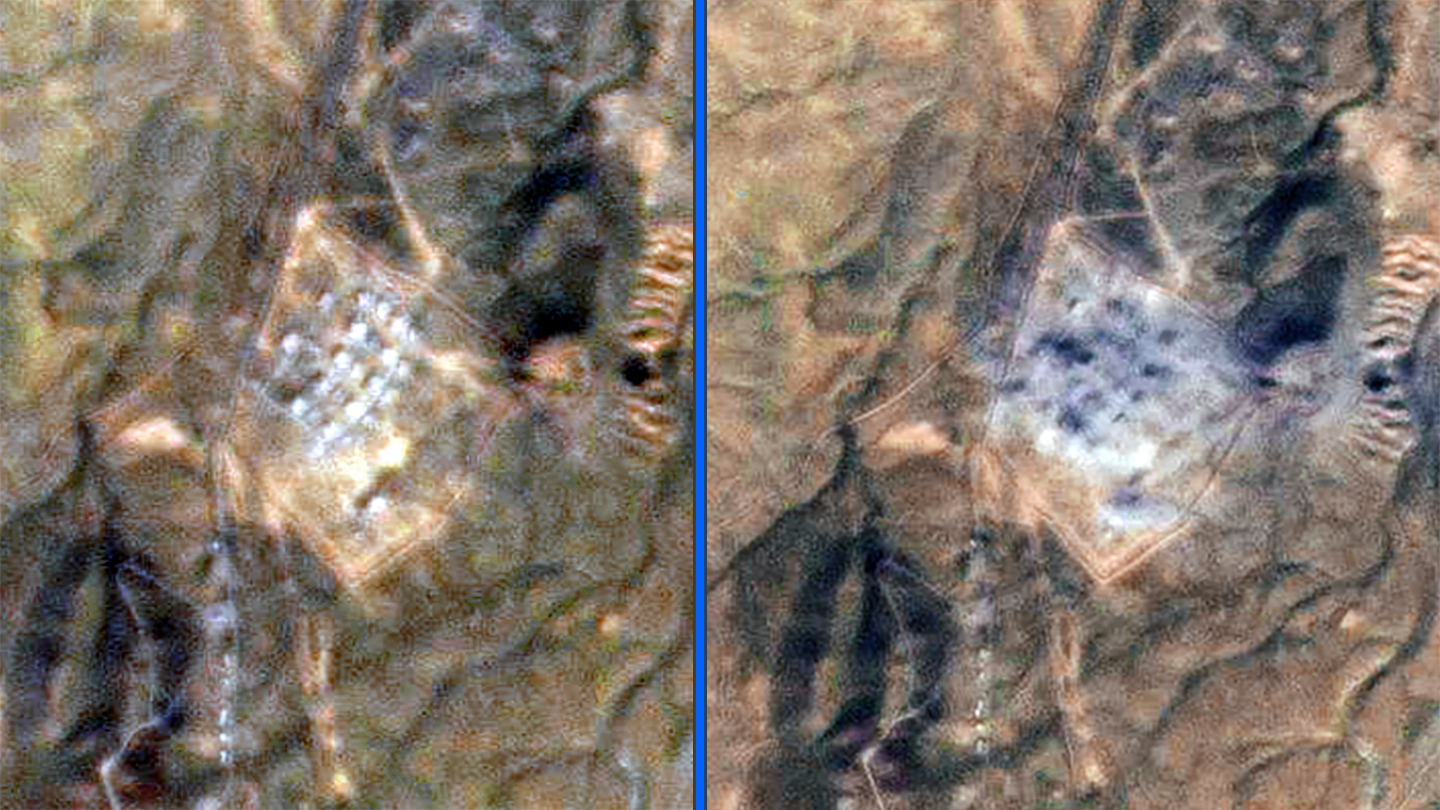The morning after the aerial strikes on Iranian-backed militias and IRGC-related targets in Syria and Iraq there are questions about what the effort achieved, especially as it was telegraphed five days in advance. What was clearly one of the operation’s primary targets – located near Dier al-Zour, a hotspot of Iranian-backed militant activity in eastern Syria that sits along the Euphrates River – no longer exists.

Pre-strike and post-strike imagery shows the munitions storage installation turned into a series of burned craters.

High resolution imagery from November of last year gives us a better idea of what the site looked like prior to being struck by U.S. airpower. While we do not know what aircraft struck the target, it would have been an ideal objective for a B-1B bomber, two of which were used in last night’s onslaught.

The facility in question, located in Ayyash, about half a dozen miles north of Deir al-Zour, has been struck before. Back in 2022, following a series of attacks on installations where U.S. personnel were based, American aircraft hit the facility. In that strike, the bunkers at the site that were more spread out were destroyed, with the far tighter cluster located immediately to the south being left largely untouched, minus a couple of craters near the storage buildings. This is the part of the installation that was leveled last night.

At the time, the facility was said to be used by Fatemiyoun Brigade, a Shiite militant group that is funded and trained by the IRGC. Why these weapons storage buildings were left untouched for so long is puzzling. The facility itself dates back to the latter half of the 2000s.

Regardless, whatever was in there clearly no longer exists.
Hat tip: thanks to @detresfa for the help in putting together this post.
Contact the author: Tyler@TWZ.com
